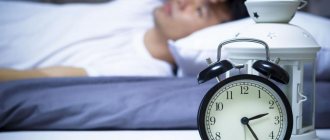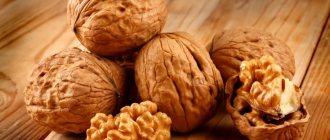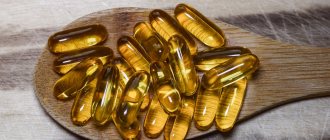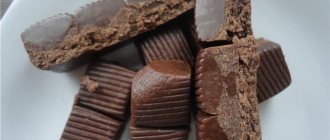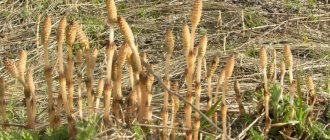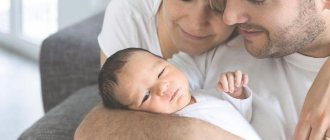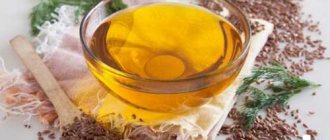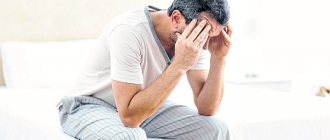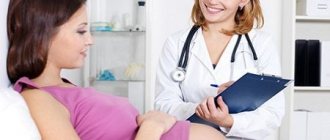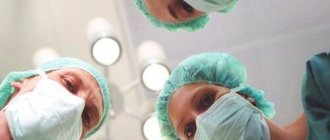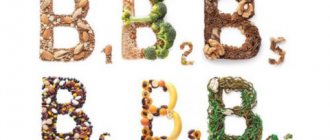Acupuncture is a controversial treatment method, if only because the myths regarding this therapy are numerous and more vivid than the other. Acupuncture - the benefits and harms of the method, possible side effects and features of the session are of interest to many who are not afraid to use alternative areas of medicine. We will talk about what this method is, why it is popular and whether it is really effective.
You will learn how the session works and what to expect from this treatment. You will also get acquainted with real patient reviews and expert opinions regarding acupuncture.
What is acupuncture
This is an alternative medicine method that came to us from Asia. Namely from Ancient China. This procedure has many different names, one of them is Acupuncture. Acupuncture refers to manual therapy. Its essence lies in placing special needles on the surface of human skin. The location of each needle is not random.
According to Chinese healers, there are many active points on the human body, each of which is responsible for the functioning of a specific organ or organ system. If you place a needle at a certain point, this organ will begin to function better. In China, such therapy is considered traditional, but in our country there is still debate about its benefits and harms.
- Svetlana
2017-06-11
My friends have tried acupuncture and say it helps. And I'm very afraid of needles.
Answer
- Alexei
2017-06-11
Svetlana, I had to contact a specialist in acupuncture: it relieves pain normally and quite effectively.
Answer
- Anna
2017-06-11
I heard a lot about acupuncture, but never did it. In fact, finding a very good specialist is difficult. Therefore, you should not do such a procedure with a specialist about whom you do not know 100% that he is very professional in this matter.
Answer
- Alexei
2017-06-12
Anna, if acupuncture has been practiced in China for thousands of years, then here we have only a couple of decades. Therefore, it is really difficult to find good specialists here.
Answer
- Lara
2017-06-11
I had acupuncture for tinnitus - I don’t know how much it helped, there is no cure, but I remember that it was painful
Answer
- Alexei
2017-06-12
Lara M., when I complained to the doctor that he was placing the needles and it hurt, he explained that the pain confirmed that the needle was placed in exactly the right place.
Answer
- Evgeniya
2017-06-11
I only heard about acupuncture, but fortunately I never had to use such treatment myself! I think I'm afraid of needles!
Answer
- Alexei
2017-06-12
Evgeniya, when you know that an acupuncturist has a good reputation, then his needles are not scary.
Answer
- Olga
2017-06-12
I remember when I lived in Pavlodar, a doctor from China performed acupuncture sessions in our clinic. But I never did it, there didn’t seem to be any particular need, and I didn’t want it to hurt.
Answer
- Alexei
2017-06-13
Olga, when a person has an established way of life and everything is in order with his nerves, then no one remembers acupuncture. They say that all illnesses are caused by nerves and people remember acupuncture after an exacerbation of illnesses due to nervous experiences.
Answer
- Larisa
2017-06-12
Undoubtedly, provided there are no contraindications, acupuncture is an effective procedure in many cases. The only difficulty is to find a truly competent specialist.
Answer
- Alexei
2017-06-13
Larisa, thank you for your attention to the blog topic.
Answer
- Tatiana
2017-06-15
The main thesis of doctors is “Do no harm.” It’s good that you wrote about contraindications
Answer
- Alexei
2017-06-15
Tatyana, thank you for your attention to the blog topic.
Answer
- Olga
2017-06-18
Thank you, you sorted everything out, you even paid so much attention to contraindications. Interesting, I didn’t know that needles help with chronic stress. I’ve already been undergoing a lot of treatment for it, but acupuncture will probably be the last thing I’ll decide on - I’m really afraid of anything sharp
Answer
- Alexei
2017-06-19
Olga, please and thank you for your positive attitude towards the blog topic. By the way, I have already undergone acupuncture courses several times and I must note that a mosquito bite is more painful than the pain from a needle.
Answer
- Lydia
2017-07-04
In some cases such treatment may be necessary. But you need to be confident in the specialist who will carry it out.
Answer
- Alexei
2017-07-05
Lydia, your fears are quite reasonable, since we spend years in order to be healthy. You can lose your health in an instant.
Answer
Features of the acupuncture procedure
The acupuncture procedure is carried out every day or every other day in courses. Most often, the course of treatment lasts 10-20 sessions. Such courses can be repeated after 3-4 weeks. The number of sessions, their time, the duration of the session depends on the person’s health problems, illnesses, age, gender, etc. It is interesting that if a person has pathological weakness, loss of strength, energy, it is best to conduct therapy sessions in the morning to awaken the body, and if, on the contrary, the person is overexcited, he is tormented by insomnia and overexertion, then in the evening.
Key points for successful treatment
Successful treatment with acupuncture (as, indeed, with any other method) is only possible when it is carried out by a very qualified and conscientious specialist.
Modern acupuncture combines both ancient and modern knowledge, so it can be very effective. It is no coincidence that this method is used not only to treat diseases, but also simply to maintain high vitality and relieve stress. Among the people who regularly attend sessions are many famous athletes, musicians, politicians and businessmen.
The needles penetrate the skin, so strict adherence to hygiene and asepsis is as important in acupuncture as in surgery.
But how do you know whether you can trust this specialist or not? To get the answer to this question, you need to take a closer look at the situation and ask a few questions.
- The most responsible specialists use disposable needles to carry out the procedure. In any other case, even with careful sterilization, there is still a non-zero probability of transmitting diseases such as hepatitis through the needle. If the needles are not sterilized at all (and charlatans often do just that), then, in addition to hepatitis, you can get HIV, sexually transmitted diseases, and even fatal sepsis.
- The room should not only be immaculately clean, but also have a pleasant, stably maintained temperature. The temperature factor is very important for the effectiveness of the procedure. If the room is too hot or too cold, this significantly reduces the healing effect.
Acupuncture is not a theatrical performance, but a medical procedure that requires strict adherence to the rules of asepsis. Therefore, if the office looks more like a souvenir shop, decorated with figurines, candles and other cute little things that have nothing to do with medicine, then this is not a doctor - a reflexologist, but an irresponsible charlatan.
And in conclusion, I suggest watching a video that briefly talks about the contraindications that acupuncture has.
And now, I hope that you, dear readers, will share links to the article with your friends on social networks and express your opinion about it in the comments.
Did you like the article? Share with friends on social networks:
This blog is read and used by 6,939 adherents of a healthy lifestyle and uses its advice and recommendations, so their health is in order, their mood is good, and their work is going well. Read it too.
I agree to the newsletter and accept the privacy policy.
You may also be interested
Baths according to Zalmanov in achieving youth and longevity
Hi all! Hello and stay healthy. In an earlier post...
10 Read more
Abstraction method and specific words as the key to it
Dear friends! Hello and stay healthy. Contents: A little information about...
54 Read more
Ultrasonic cavitation – healing ultrasound
Good day, dear friends of Alexey Shevchenko’s blog “Healthy Image...
11 Read more
ABOUT HEALTH AND LONGEVITY AND TRAVELERS ON THE ROAD TO LONG...
The World Health Organization (WHO) divides a person's age into young -...
5 Read more
What are the types of acupuncture techniques?
There are various techniques for performing acupuncture procedures:
- Sedative, or the second name is inhibitory. Its features are as follows: needles are placed at 4-6 points to a depth of 11 centimeters. It is recommended to carry it out for diseases that are accompanied by cramps and pain. The needles last from 20 minutes to an hour on special occasions.
- Tonic or stimulating acupuncture technique. During this technique, 9-10 sensitive points are involved. The depth of needle placement does not exceed 0.6-0.8 centimeters. This technique is well suited for paralysis, after a stroke, and with reduced sensitivity of the limbs.
As you can see, the methods differ from each other and have different purposes.
Mechanism of action of acupuncture
The positive effect of acupuncture on the body is not disputed by modern medicine. This is confirmed not only by patient reviews, but also by serious clinical studies. They show that the effectiveness of acupuncture varies from 80 to 91%.
According to the capillary theory, the effect of acupuncture occurs due to the fact that under the action of the needle, blood flow through the capillaries inside the skin is activated and restored. The metabolism between the skin and neighboring tissues improves. According to the tissue theory, after inserting a needle into the surface layers of the skin, the release of biologically active substances from the cells of damaged tissues is activated. They stimulate the body, activate cell division and restoration, improve the penetration of oxygen into tissues, and increase the level of immunity.
Proponents of the neuro-reflex theory argue that after irritation of certain points on the skin, the signal is transmitted along nerve fibers to the corresponding parts of the spinal cord, and from there to the brain. As a result, a complex cascade of reactions is launched. It involves changes in blood circulation, release of biologically active substances and hormonal response. A certain amount of endorphins – joy hormones – is released.” They improve emotional well-being and reduce the perception of pain.
The benefits of acupuncture for the body
Beneficial effects on human health:
- vasopressor effect;
- improvement of peripheral blood circulation;
- pain relief;
- fight against seizures; spasms, insensitivity of certain parts of the body;
- improving the protective and adaptive reactions of the human body;
- beneficial effects on the female and male reproductive systems;
- helps fight radiculitis. Considered one of the most effective treatments;
- effective for headaches, high blood pressure, hypertension and the cardiovascular system.
Therapy has a beneficial effect on the nervous system and sleep. If a person often has insomnia, has terrible dreams, or experiences sleep paralysis, it is a direct indication to take a course of sessions. After a full cycle of procedures, the patient becomes emotionally balanced and calm.
If the problem is the opposite - constant fatigue, drowsiness, apathy, depression - acupuncture will cope with this. All these conditions are responsible for certain points that will be affected.
Benefits of acupuncture
Having understood what acupuncture is, it is necessary to understand what benefits it can provide to the human body.
Studies conducted in 2006 have proven the effectiveness of acupuncture in the treatment of diseases associated with:
- connective tissues;
- musculoskeletal system;
- respiratory system;
- nervous system;
- genitourinary area.
Scientists studied the biochemical parameters of blood, blood cells and their ability to oxidize. The indicators improved significantly with regular acupuncture sessions. Success was achieved in 80 - 91% of cases.
Acupuncture for osteochondrosis helps to obtain the following positive results:
- pain relief;
- activation of restoration processes in cartilage;
- reduction of swelling of the spinal nerves and surrounding tissues;
- elimination of spasms;
- stabilization of hormonal levels;
- improved sleep;
- restoration of normal joint mobility;
- normalization of performance;
- increasing the overall tone of the body.
The health benefits of acupuncture for women extend to the area of gynecological diseases. High-quality sessions have a positive effect on reproductive function. Acupuncture helps normalize blood circulation in the pelvic organs and adjust hormonal levels in women. The therapy treats infertility that occurs due to hormonal disorders. Sessions allow you to eliminate ovarian dysfunction and improve your cycle.
In modern medicine, acupuncture has already been recognized as effective for a number of diseases. This was influenced by the results of clinical studies. Positive reviews left by satisfied patients also played an important role in this.
Pros and cons of acupuncture procedures
Advantages of acupuncture:
- availability of the method;
- high efficiency of therapy;
- no medications or medicines are required;
- simplicity of the procedure;
- low risk of side effects.
Disadvantages of acupuncture:
- a significant disadvantage is the risk of contracting infectious diseases, including HIV;
- painful procedure;
- bruises, hematomas and bruises in places where needles were inserted;
- there is a chance of damaging a nerve or tendon.
It all depends on the doctor who performs the procedure and the medical institution, which must be carefully selected before going for the procedure.
Benefits of acupuncture
Modern research methods give their own interpretation of the benefits of acupuncture. Thus, with the help of functional MRI and transcranial Doppler therapy, it was possible to determine that the influence on acupuncture points changes the activity of subcortical brain structures. But the departments of the central nervous system have a clear connection with the organs, and therefore their stimulation can produce positive changes in the functioning of these organs.
When does acupuncture help:
- for pain of various localizations - head and lumbar, including;
- with paresis of the facial nerve;
- in cases of certain pathologies of the musculoskeletal system;
- with arterial hypertension;
- if the patient has depression, neurosis;
- for gastritis and gastric ulcer;
- in the case of certain diseases of the reproductive organs.
Chinese acupuncturists claim that they can cope with 250 different ailments.
Diseases of the nervous system and osteochondrosis are pathologies for which, probably, most often patients turn to specialists. There is a common mistake - turning to acupuncturists when traditional medicine does not help or helps little. This is not true; acupuncture will be most effective at the early stage of the disease. If the changes are already organic, then oriental medicine is often powerless.
When are needles prescribed?
The acupuncture procedure is often prescribed to people with diseases of the cardiovascular system (atherosclerosis, hypertension, coronary heart disease);
- with diseases of the respiratory system (asthma, bronchitis);
- for diseases of the ENT organs (ear, nose and throat) - namely laryngitis, pharyngitis, tonsillitis, sinusitis, etc.;
- for diseases of the thyroid gland, diabetes mellitus;
- for problems with bones and joints;
- during pancreatitis, colitis and other ailments of the gastrointestinal tract;
- after strokes, during paralysis;
- effective for Parkinson's disease;
- neuroses, depression, unstable mental state;
- helps with diseases of the genitourinary system (various cystitis, prostatitis, etc.);
- for radiculitis, lower back and back pain.
Cosmetic acupuncture is also popular, which helps relax facial muscles and start the rejuvenation process.
Acupuncture in children
Children under one year of age do not undergo acupuncture. Doctors are wary of treating children under seven years of age with acupuncture, since the child is not able to calmly respond to injections.
Indications for acupuncture in children are:
- neurological pathology (enuresis, neuroses, postpartum encephalopathy, cerebral palsy, increased muscle tone)
- allergic diseases;
- vegetative-vascular dysfunction;
- diseases of the digestive system;
- frequent respiratory infections;
- decreased immunity.
Acupuncture is used for hypoplasia of the corpus callosum.
For children, needles are placed through a tube that fits tightly against the body and compresses the nerve endings. Sometimes microneedles (tiny, thin buttons) are glued to biologically active points. Their parents rent themselves at home in a few hours. If necessary, the doctor warms the points with wormwood cigars or cones, preventing pain from occurring. After the first two or three sessions, the child stops being afraid and happily goes to the procedure.
How does an acupuncture session take place, methodology
The procedure itself looks like this: the patient sits on a couch, the doctor slowly places needles at different depths. Such needles can be made of silver, gold, or steel. They can be taken out immediately or after some time. They are obtained in a variety of ways. You can take them out quickly, or slowly, gradually rotating them. The setting can be symmetrical. The placement, time spent in the body, the thickness of the needle, and the method of pulling them out directly depend on the disease and the patient’s complaints.
The room where acupuncture is performed has a calm, peaceful atmosphere. She instantly relaxes the client. It is the moment of relaxation that is important for a painless procedure.
How is the procedure performed?
For the acupuncture procedure, disposable sterile thin needles made of high-quality material are used. You can find needles plated in silver or gold. The number of needles, their price and insertion depth completely depend on the diagnosis. During the first visits, the needles are inserted shallowly.
Acupuncture is a bloodless and almost painless procedure. When the needle is inserted, the patient may experience slight tingling, itching and a feeling of numbness. This is the norm. How well the patient will tolerate the procedure depends not only on the skill of the specialist, but also on his individual characteristics.
During a standard acupuncture session, the following sequence of actions is performed:
- The doctor probes the area of the body where the needles are planned to be inserted. It identifies biologically active points.
- The skin is disinfected with alcohol and needles are inserted.
- A sedative and stimulating method of influence is used. With the first method, the specialist applies strong irritation to the points for a long time with a gradual increase. Two methods of sedation are used. At the first type, a pair of needles is inserted and rotational movements are made, moving them to a depth of 1.5-8 cm. The needles are left in the body for 30 minutes, and sometimes this time is increased to 2 days. The second method involves inserting 2-4 needles with careful, gentle movements. This method can be used on children. The sedative method is used to achieve a calming and analgesic effect.
- The exciting method allows you to quickly stimulate all points at once. But the impact will be weak and short-lived. The depth to which the needles are inserted is 3-10 mm. The exposure time is also much shorter than with the sedation method, ranging from 30 seconds to 5 minutes. This method of exposure allows you to stimulate, excite and tone at the same time. The technique is used on children and adults for such pathologies as paralysis, collapse, atonic constipation, facial neuritis, impotence.
- To enhance the therapeutic effect, heat or electric current is passed through the needles. Rotation of needles mechanically or manually is also used.
From session to session, the specialist can change the method of influence. This combined approach allows you to achieve the greatest results.
Usually in the last sessions the discomfort reaches its peak due to deeper insertion of the needles and an increase in the sensitivity threshold.
Red spots and swelling often remain at the injection sites. Bruising may occur. This is a standard skin reaction to minor injuries and goes away quickly. You can achieve a sustainable positive effect after 10-15 sessions.
Important instructions
Initially, you need to read the literature on the topic of acupuncture, understand its principles and features. It is advisable to talk to a person who has already experienced the course of treatment. When choosing a specialist, you should take into account his work experience, patient reviews, and medical education (in priority).
It is also recommended that you go to a clinic or health center rather than a private office. If a person has a clear reluctance or fear of injections, then he should not undergo this procedure. Be sure to pay attention to the needles the doctor uses. They must be individual, sealed and opened only before the start of the session in front of the patient.
Before starting acupuncture, you need to come for a consultation with a therapist and find out if there are any contraindications.
Can acupuncture have a negative effect on the human body? Any therapy will have a negative impact on human health if it is performed incorrectly or overdone. That is why it is important to find a good specialist in this field of medicine and not self-medicate. After all, it can harm your health.
If you do not know the location of the energy points, there is a possibility that the needle will touch a nerve, which will cause severe pain and discomfort. Negative consequences are possible if the patient had contraindications to the procedure. And this therapy has quite a few of them.
When is acupuncture contraindicated?
There are quite a few contraindications to acupuncture. They are divided into:
- absolute (the procedure is completely prohibited);
- relative (not recommended).
Absolute contraindications include the following conditions:
- Young children's age. Children's skin is very thin, so it is too difficult to insert the needle to a safe depth. In addition, children psychologically do not tolerate the procedure well: they are frightened by the sight of needles, it is difficult for them to maintain the stillness necessary during the session, and all this makes acupuncture not only ineffective, but also dangerous.
- Conditions accompanied by elevated temperature. The procedure is completely ineffective due to altered muscle and blood vessel tone caused by fever.
- Presence of infectious diseases. There is evidence that reflexology has a positive effect on the immunity of a healthy body, but can cause an inadequate immune response if there is an active source of dangerous infection in the body (tuberculosis, hepatitis, HIV, sexually transmitted diseases, and so on).
- Severe pain, the cause of which has not been established. Severe pain can be a symptom of diseases that require emergency intensive care.
- Pregnancy. Acupuncture is quite an exciting procedure, and it can trigger premature labor.
- Blood diseases, tendency to form blood clots, high blood pressure. Acupuncture activates blood circulation, which has an adverse effect on the course of these diseases, and can even pose a threat to life.
- Oncological diseases. Stimulation of blood circulation enhances the growth of malignant tumors and accelerates the formation of metastases.
- Tendency to form keloid scars. Acupuncture causes microscopic trauma, but it can be enough to cause unsightly scarring in people with a genetic predisposition.
- Mental disorders, mental disorders, as well as states of alcohol and drug intoxication. Sessions are often accompanied by minor stress and sometimes mild pain. This can cause an attack of inappropriate arousal in people suffering from mental disorders.
The presence of scars, moles, varicose veins, warts, psoriatic plaques, rashes or pustular skin diseases in the acupuncture area also makes the procedure impossible.
The group of relative contraindications includes the following conditions:
- Old age (over 70 years). Such patients do not tolerate even minor stress that may accompany sessions, and they usually have hypertension, heart disease and other diseases that are absolute contraindications.
- Suffered a stroke.
- Poliomyelitis and muscular dystrophy.
- Very severe physical or emotional fatigue.
- Trypanophobia is a panicky fear of needles.
Contraindications to acupuncture
Acupuncture has a number of contraindications:
- People over 65 years of age;
- Pregnancy, lactation period in women. Especially in the second half of pregnancy. Acupuncture can harm the woman and baby;
- In case of fear of injections;
- Patients with tuberculosis;
- If the patient has cancer;
- For renal, liver, heart failure;
- For acute infectious diseases.;
- For causeless pain;
- If the patient has HIV disease;
- For fever;
- Anorexia, exhaustion;
- For mental illnesses and disorders.
Acupuncture after stroke
Treatment of stroke with acupuncture is aimed at restoring impaired or lost functions of the patient. One of the common conditions characteristic of the post-stroke state is paralysis. Impaired motor function can be caused by cerebral infarction or hemorrhage, which occurs due to rupture of cerebral vessels. Acupuncture for stroke involves eliminating the consequences of the disease, taking into account the causes of acute cerebrovascular accident.
Reflexologists begin acupuncture in the acute phase of a stroke after the patient has regained consciousness. The effectiveness of treatment lies in improving tissue nutrition, which normalizes the physiological activity of muscles. Acupuncture after a stroke allows you to re-form the lost reflex mechanism and restore paralyzed areas (limbs, facial muscles).
In parallel, neurologists use drug therapy to prevent hypoxia, improve blood circulation in the brain and prevent the formation of blood clots. Acupuncture, exercise therapy, massage and physiotherapeutic procedures can significantly speed up the rehabilitation period and restore the patient’s health in a relatively short period of time.
Acupuncture helps with lymphadenitis, dyshidrosis, and autonomic disorders. In order to undergo an effective course of acupuncture, call the Yusupov Hospital. The contact center of the Yusupov Hospital operates 24 hours a day, without days off or lunch breaks. You will be offered to undergo procedures at a convenient time.
Author
Alexey Markovich Moskvin
Side effects from needle placement
There are almost no side effects as such. Only dizziness or bruises, hematomas, bruises may appear after the acupuncture procedure. Damage to the skin does not last long - 1-2 days. Side effects may include nerve inflammation. This happens when the needles are placed incorrectly.
The undoubted advantage of acupuncture is the very low likelihood of various complications or side effects. According to statistics, about 90% of patients get rid of diseases and unpleasant symptoms thanks to this ancient Eastern technique.
Are there any unwanted effects?
If the procedure is performed correctly and with all precautions, then no harmful side effects will occur. But if a non-professional gets down to business, then the consequences of such “treatment” can be very serious. The most unpleasant ones include the following:
- Severe pain during needle insertion.
- Damage to blood vessels with the formation of bruises.
- Damage to nerves and tendons.
- Nausea, severe weakness, dizziness, fainting.
Where can I put needles and how much does it cost?
Prices for the procedure vary depending on the city. You can find specialists who will conduct a session for 400-1200 rubles. This is the price of one session. Acupuncture sessions are conducted in clinics, sanatoriums, health centers, and private offices. It is preferable to go to a certified, highly qualified specialist who works in a clinic or health center. He must have a medical education and certificates of completion of training and courses. You should not trust your health to people who have only completed courses and do not have knowledge of anatomy, physiology, etc. So there is a possibility of only harming the body. An alternative is to go to the homeland of acupuncture, China, and undergo a couple of sessions with local masters.
How is acupuncture done?
What are meridians? Traditional Chinese medicine defines this concept as 12 large anatomical sectors. A meridian, or channel, groups certain blood vessels, nerves, and muscles. Each one also includes acupuncture points.
The image below is a visualization of these 12 acupuncture meridians as lines (see photo).
Each meridian is named after the organ with which it connects: lungs, spleen, heart, kidneys, liver, small intestine, large intestine, three-burner meridian, stomach, gall bladder, pericardium.
The points for inserting needles and relieving pain are selected based on the theory of how parts of the body are connected to each other. The procedure can be divided into 3 stages.
Definition of a “sick” meridian
The course of treatment for any disease begins with determining the exact source of pain and which meridian is affected and needs treatment. Find a meridian that will restore balance. Each of the meridians is balanced by the others. This connection comes from a classical Chinese philosophical and medical text called the Ai Ching. This text ties together basic philosophical concepts with observations about the world and the human body.
Selecting points
After determining one or more meridians, you can begin selecting points. Remember, there are several points associated with each meridian. The answer lies in connection with the Chinese system of body mapping. The principle of its operation is familiar to many in the form of foot reflexology, where the foot reflects the entire human body. Impact on the foot in a certain place affects the corresponding part. In acupuncture, one part of the body is mapped onto another.
Types of acupuncture in acupuncture
In the acupuncture system, you can find various types of techniques that have been formed over the past years. The main, most famous types of techniques:
- Chinese acupuncture is considered the most common and popular type. Its distinctive feature is that patients experience quite painful sensations during the session. This is due to the thicker needles that are used. It is not for nothing that Chinese acupuncture is considered the most aggressive, painful type of acupuncture.
- Japanese acupuncture. Japanese acupuncture is considered more comfortable, pleasant and no less effective for patients. It is ideal for children, teenagers and women. After all, this group of people has sensitive skin. In addition, children are often afraid of injections and everything connected with them. Often, in this technique, the doctor acts on energy points without damaging the skin. Simply put, without puncturing the skin with needles. For those who have not previously undergone acupuncture sessions, this technique is the most suitable and favorable.
- Korean school. This technique involves influencing special points on the hands. According to followers of this trend, the hands are a kind of reflection of the whole organism. It is on the hands that there are a large number of energy points.
- Head acupuncture. This is an effective method of recovery and treatment after strokes, paralysis, injuries, spinal cord and brain injuries. Also, acupuncture of the head has a beneficial effect on the functions of memory, attention, and accuracy of movement. This technique involves placing needles on the surface of the scalp where the points are located.
- Acupuncture based on 5 elements. Treatment takes place not only on the physical, but also on the energetic and spiritual level. The blocks that cause many diseases are removed from the patient. The needles are usually thin and do not cause pain when injected.
Acupuncture session
A course of acupuncture, which is prescribed without preliminary examinations or diagnosis, is clearly harmful. The doctor must know the patient’s diagnosis not from his words, but from the medical record. He must clarify all possible contraindications, the characteristics of his health, and provide for individual reactions.
Energy points on the human body
As the doctors themselves note, each energy channel that they have to influence gains strength at a certain time of the year and at a certain time of day. But it is not very easy for a patient to get an appointment exactly at the required daily or annual rhythm, although maximum improvement in the condition is possible with this approach.
Features of the procedure:
- The body must be rested before the start of the session. The patient must not eat for at least 2 hours at the start of the procedure. The entire procedure lasts 20-30 minutes (on average).
- The doctor asks the patient to lie down. It is very important that the patient is not alarmed and thinks about pleasant things.
- An acupuncture session does not require patient activity. He needs to relax, follow the doctor’s requests, and try not to think about anything.
- There is no need to be afraid of pain. They certainly exist, because the doctor works with needles that enter the skin with its numerous pain receptors. But the pain is weak and short-lived, so even a child usually tolerates the session calmly.
- Most doctors work with disposable needles that come sterile. Needles are used once and are sterilized. The doctor must open the package in front of the patient.
This video shows how an acupuncture session is performed in the treatment of cervical osteochondrosis.
A quick effect is not exactly what you should expect from this method. A 10-day course of treatment already predicts the success of therapy to a greater extent. But you still need to take into account that relief often comes not during the session, but after completing the whole course.
And even more so, you should not expect a quick effect if you use acupuncture for weight loss or are treated with acupuncture for smoking. You definitely won’t be able to lose weight with just one course; you need consistent and long-term intervention, combined with other methods and medical prescriptions.
Is it possible to do acupuncture at home?
Those who have tried the effect of acupuncture on themselves are often interested in whether it is possible to do the acupuncture procedure at home. Yes, you can. But for this, it is recommended to take training courses or at least thoroughly study special literature on a given topic, atlases, which show in detail the location of all points. Needles can be selected and purchased at a pharmacy or special massage stores; They are also sold in various oriental shops. The disadvantage of doing home acupuncture yourself is that it is impossible to perform the procedure on the back.
Indications and contraindications for the procedure
Acupuncture, or acupuncture as it is otherwise called, is mainly used to relieve discomfort in the following conditions:
- chemotherapy - nausea and vomiting,
- toothache,
- birth pains,
- menstrual cramps,
- allergic rhinitis.
Absolute contraindications are exposure to points LI 4, SP 6, UB 60, UB 67
LI 4
SP 6
UB 60
UB 67
and sacral foraminal points B 31, 32, 33, 34 during pregnancy (see photo).
Acupuncture should not be performed on patients with uncontrolled movements. Needles should not be used to pierce swollen extremities with the risk of lymphedema.
Relaxation of the muscles around the spinal cord can cause spinal compression.
Do not insert the needle into scars, keloids, recent incisional wounds, or skin with sensory deficits. Relative contraindications are gout, oncology, diabetes, epilepsy, hemophilia and other bleeding disorders.
Reviews about acupuncture
Reviews from doctors
Reviews from doctors about acupuncture are positive. After all, this method has more advantages than disadvantages. Doctors often prescribe this method of treatment as an additional treatment to the main one. Undoubtedly, acupuncture effectively relieves many diseases and unpleasant symptoms. In most cases, doctors who do not recognize alternative medicine methods deny the positive effect on the body.
Patient reviews
As mentioned above, statistics claim that 90% of people who underwent a course of acupuncture felt relief and recovery from their illnesses. Naturally, you should not expect that acupuncture will cure terrible serious diseases such as oncology, HIV, diabetes, benign tumors, cysts, and gynecological inflammations. If a doctor promises a patient recovery from such diseases, you shouldn’t go to him, it’s just advertising. The opinions of those who attended the session were mostly positive.
The author of this article has repeatedly undergone courses of acupuncture treatment for osteochondrosis and hernias in the spine, accompanied by pain in the neck and back:
I can definitely say that the acupuncture procedure relieves pain and strengthens the spinal muscles. Together with therapeutic massage and health-improving gymnastics, needles provide a guaranteed healing effect. In my case, it has lasted for more than 10 years, but I support it with regular yoga classes, which helps keep my back healthy.
Acupuncture is available to everyone without exception. Therefore, you should definitely try it, because it has great benefits for human health, affecting all groups of organs and improving their functioning. You shouldn’t expect complete healing from serious illnesses, but it can relieve pain and various unpleasant symptoms. It is not without reason that various acupuncture techniques have been preserved since ancient times. The effectiveness of the treatment is time-tested.
- Related Posts
- Kinesio taping of the foot for various foot problems
- Brazil nut: chemical composition, benefits for men and women, scope of application
- Taping the knee joint for various knee problems
« Previous entry
Harm and side effects
Like any officially approved treatment method, acupuncture has contraindications.
Do not undergo acupuncture treatment if:
- high temperature (whatever caused it);
- any infections in the body;
- acute surgical pathologies;
- pregnancy of any stage;
- children under 7 years of age, as well as the elderly patient;
- severe immune diseases;
- blood diseases;
- various types of intoxication;
- mental illness;
- oncology.
Finally, who treats you is very important. If you are in the hands of a skilled specialist, the likelihood of a good result is high. But if the doctor's qualifications are questionable, the treatment will be either useless or even harmful. For example, using unsterile needles is a risk of introducing infection to the patient and developing an inflammatory process. If the doctor cannot select the points during treatment, the patient risks damaging blood vessels, nerves, and reflexogenic zones. The rules for placing needles are a guarantee that the physician will not harm the patient.
Sterile needles should always be used during acupuncture
To prevent treatment from being harmful or useless, several factors must be met. Firstly, a correct diagnosis, and secondly, the acupuncturist’s precise knowledge of the anatomy and each of the 1,700 acupuncture points. Finally (and this is the most important thing), the physician must know how the points that will be affected in each specific case are combined. Be sure to check where you are turning for help: the doctor must have an appropriate diploma, and the clinic or office must have a license.
What is acupuncture?
The roots of acupuncture treatment go back centuries. The following fact is reliably known: more than 5 thousand years ago in China, treatment through pressure on acupuncture points was already used. Over time, the technique of this treatment has evolved. Acupuncture masters passed on their skills and secrets from generation to generation. It must also be said that the development of acupuncture was greatly influenced by the philosophical and religious teachings of Ancient China. For example, Taoism.
Between the 3rd and 7th centuries AD. This technique was the most popular among many Asians. Acupuncture spread to Western countries in the 20th century. But, due to the development of traditional medicine and modern science, this type of treatment is considered only as an alternative. Our country became acquainted with acupuncture not so long ago, just in the last century.
Conditions for achieving results
For a quick and high-quality action of this procedure, certain conditions must be met:
- complete trust in the specialist performing the procedure;
- use of strictly disposable sterile devices;
- combination of procedures and diet: the interval between food and the event is at least half an hour;
- treatment should be started only after a good rest from intense physical activity;
- It is strictly forbidden to perform acupuncture if you have recently visited a sauna or bath;
- You should not succumb to hypothermia, because it leads to muscle spasms and reduces the effect.
If these principles are followed and ensured, the measure will definitely help you achieve the desired result and feel much better. Thus, we examined what are the features of acupuncture treatment and the directions of its action in general. We also examined conditions and measures that help improve the general condition of the patient in various pathologies. Only a competent and comprehensive approach to acupuncture will help achieve the desired result.
The benefits and harms of acupuncture
The methods of ancient Eastern medicine are equally praised and criticized. For many patients, this is an opportunity to improve their health without surgery or medications. Main benefits of acupuncture:
- ease of implementation, accessibility of the method;
- minimal risk of side effects;
- relaxing effect on the nervous system.
Acupuncture is not suitable for patients with hypersensitive skin. Other disadvantages of acupuncture:
- risk of infection (HIV, hepatitis B, C);
- hematomas, bruises after a needle;
- nerve damage, trauma, tendon ruptures;
- malignancy of benign tumors into oncology;
- difficulties in finding a professional acupuncturist;
- therapeutic effect only after the completed course;
- high cost of a set of procedures.
To increase the safety and effectiveness of the method, it is important to follow the following medical recommendations:
- Do not perform a session on an empty or full stomach, after intravenous injections.
- Make sure that there are no open wounds, suppurations, or areas of inflammation on the skin.
- Tell your doctor about any previous medication you have taken.
- 3-5 days before the procedure, do not go to the bathhouse, sauna, or swimming pool.
- Do not drink alcohol the night before acupuncture.
- Temporarily give up bad habits.
The benefits of acupuncture
- Acupuncture affects the receptors of the sensory organs and body parts through nerve segments, which means it has a beneficial effect on the regulation of the autonomic nervous system (sympathetic and parasympathetic divisions of the autonomic nervous system).
- Acupuncture can regulate the functioning of secretions, which can cause the production of hormones such as endorphins, corticoids, etc.
- Thus, based on the theory of oriental medicine, acupuncture is increasingly being used in medical practice by modern medicine around the world and brings good results.
How is the treatment going?
What makes us go for help? Strong pain. With cervical osteochondrosis, the head and neck hurt, radiating to the back of the head and shoulder blade. Any movement makes it worse. It may hurt in the heart area. Fingers may become numb and swollen.
The main means of control at the time of exacerbation are rest, warmth, analgesics. But if you combine them with acupuncture, improvement can occur very quickly, literally in 1 session.
For example, on the auricle we have two points from which treatment is often started. AP55 (the most important pain-relieving point) and AP37 (the point that corresponds to the cervical spine) - when exposed to them, the pain disappears immediately.
The patient’s sensations with cervical osteochondrosis may be different. Therefore, there is no single scheme of points that “treat osteochondrosis.” As a rule, the doctor uses points that are located in the pain zone (shoulders, back of the head, shoulder blades, the so-called cervical-collar zone - where it is located, as the name suggests), and points on the arms . But not only.
You're probably wondering where the doctor puts the needles in certain situations? Here are some more examples.
If your head hurts...
This is probably what patients come with most often. Pain in the neck, back of the head, tense muscles, stiffness, dizziness. Very unpleasant.
The main points for influence are the neck, the area between the shoulder blades, the arms, as well as the points of the median meridian (which runs along the midline of the body). A soothing method is applied to the points that correspond to the painful side, and a tonic method is used on the opposite side.
When your back hurts...
If the pain covers the back of the neck, shoulders, or radiates to the arm, the acupuncturist, first of all, uses points that are located in these areas (collar region, neck, back of the head), a point in the area of the seventh vertebra (the one that is easily palpable), point on the bend of the shoulder. On the side of the sore hand, the points soothe, on the opposite side they tone.
When your heart hurts...
The cause of pain in the heart may be osteochondrosis of the cervical spine. If you turn incorrectly, your heart will press, pound, and sometimes even your entire upper body will ache, and nitroglycerin and similar medications do not help. Examinations show nothing, there are no changes on the ECG.
And in this case, acupuncture gives very good results. There are many points that help. These are already known to us points of the neck and collar zone, points on the ear, heart meridian, pericardial meridian and others. Most often, a calming effect is used.
But it is very important to remember: for any pain in the heart, consultation with a cardiologist is mandatory!
The methods of work of acupuncturists differ. Everyone has their own achievements, their own experience. But you want to know what awaits you before you see the doctor, right? Therefore, read on →
Acupuncture for cervical osteochondrosis
The neck, as the most mobile part of the spine, more often suffers from degenerative changes in the discs and compression of the vertebral artery. Osteochondrosis at the cervical level is characterized by headaches and muscle pain. Abnormalities in blood pressure and VSD are quite common.
In cervical reflexology, needles are placed along the area of the shoulder blades and between them. Acupuncture, acting on reflex points, promotes:
- improvement of local innervation;
- normalization of the functional ability of nerve impulses;
- stabilization of blood metabolism in the cartilage and joints of the neck;
- relieving pain and eliminating muscle spasms.
On a note. The results of treatment are manifested in the restoration of neck mobility, headaches disappear, and numbness in the arms and shoulders disappears.
Why is acupuncture so popular?
Today, acupuncture is quite popular, mainly due to the fact that the treatment method dates back to ancient times, and the remedies used by healers are traditional for Asian countries. Many scientists have scientifically proven the effectiveness of acupuncture. Experts in this industry, in turn, are completely confident in the effectiveness of the methods used in the treatment of a wide range of diseases. In addition, it is important that acupuncture harmonizes the movement of vital energy and promotes relaxation.
What acupuncture clinics are there in Moscow?
There are more than 120 acupuncture clinics in Moscow, and this does not include private specialists. The most popular procedure, according to doctors, is acupuncture for lumbar hernia. By the way, the reviews here are mostly positive.
Patient opinions about acupuncture sessions vary widely. There are those who claim that acupuncture saved a person’s life, while others complain of unpleasant side effects.
It is better to conduct sessions in a special medical institution, and not in a dubious office or at home. An acupuncture clinic will solve the problem of patient safety, sterility and professionalism of the doctor. It is better to take a course at a slightly higher cost than to undergo a medical procedure at home with an incomprehensible doctor, albeit of Asian appearance.
Many patients are interested in acupuncture in Moscow by Chinese doctors. The price of the issue also matters. The most famous clinics providing this service are:
- "Hua Xia";
- "Doctor Lee";
- "East Clinic";
- Vietnamese Acupuncture Center;
- "Doctors of China";
- "Free Movement";
- "SlimClinic";
- "Evenal";
- "Jude Shea."
The cost of pleasure varies from 1000 to 7000 rubles per session.
The effects of acupuncture
- Pain relief - the doctor stimulates the nerve endings with needles. The impulse goes to the brain centers, promoting the release of hormones that have a relaxing and analgesic effect.
- Recovery - by activating points on damaged tissue surfaces, needles help release valuable elements that promote tissue regeneration, strengthen immune forces, and accelerate metabolic processes.
- Rehabilitation - through signals sent to the brain, the body normalizes the functioning of internal organs, increases blood flow and blood supply within the body.
Skeptics argue that acupuncture has no proven health benefits. They refer to the power of self-hypnosis that a person possesses. However, acupuncture and reflexology help young children who cannot convince themselves that acupuncture has powerful health potential.
Health benefits of the procedure
Many people saw in medical programs people whose body parts were strewn with numerous, thin needles. For our compatriots, such procedures will seem like an exotic oddity, of which there are many in the culture of our neighboring country. So why is acupuncture done? It acts as primary or auxiliary therapy for a number of diseases.
Acupuncture is classified into three types:
- Corporate;
- Auricular;
- Acupuncture of diseases through the feet.
In the first case, certain points on the human body are affected, and in the second - on certain areas of the auricle. The latter, as is known, is similar in shape to the human embryo. On the feet, which seem rough at first glance, a large number of sensitive points are concentrated, similar to the auricle.
You might be interested to know what diseases speleotherapy helps overcome. Read more in this article...
How the procedure works on the human body:
- First of all, it speeds up blood flow. Using the techniques of ancient oriental medicine, doctors can influence the peculiar “projections” of internal organs on the skin. The patient is placed on a special couch, the desired area of the body is exposed, it is disinfected and pierced with the finest needles. Painful sensations, which many are so afraid of, rarely occur. Chinese medicine includes not only practical treatment, but also a spiritual component;
- Acupuncture is actively used for weight loss: it helps not only to lose weight, but also to cleanse tissues of excess fluid, toxins and waste. Naturally, regular procedures for obesity do not help as effectively if you do not reconsider your diet. In cosmetology, acupuncture is used to rejuvenate the face, neck and hands - the most important “traitors” that betray age;
- Acupuncture for insomnia acts as a sedative for frayed nerves and does not require additional medications. Acupuncture for sleep is often performed in combination with follow-up aromatherapy. For insomnia, auricular acupuncture is usually performed;
- Acupuncture also helps with migraines, VSD and hypertension. Acupuncture is considered an effective treatment for chronic headaches. It is often associated with nervous disorders and stress;
- An indication for the use of acupuncture can be almost any chronic disease or the consequences of previous illnesses or operations;
- Recently, acupuncture has been practiced as a remedy for alcoholism and smoking. It is gradually replacing the outdated “coding” - a method that combines hypnosis and psychological influence. There is no compatibility between acupuncture and alcohol. A person undergoing treatment or undergoing a preventive course must give up destructive habits and maintain a healthy lifestyle. Otherwise, the entire therapeutic effect of the procedures will be negated;
- Acupuncture helps with coughs and colds; it also successfully treats sinusitis and sinusitis, even in complex, advanced cases;
- Acupuncture in dentistry helps relieve pain without the use of potent drugs. In difficult cases, it is, of course, impossible to eliminate the problem without the intervention of a dentist. But for chronic toothache, acupuncture will help you fall asleep peacefully and not be afraid of the negative effect of eating cold or hot food;
- For men, procedures are performed for impotence and prostatitis. Since acupuncture normalizes blood flow, with regular sessions, “male strength” returns quickly;
- Acupuncture helps with arthrosis and other joint diseases;
- For epilepsy, systematic visits to the “Oriental doctor” will help reduce the frequency of seizures;
- Treatment with needles helps restore hearing, so it is used for hearing loss;
- The procedures also help with neuritis and psoriasis. The latter cannot be completely cured, but it is possible to reduce the area of affected skin and reduce the frequency of periods of exacerbations;
- For multiple sclerosis, Eastern practice helps restore the immune system, the destructive actions of which become the root cause of the disease;
- For some types of allergies, procedures either cure completely or reduce the body's response to irritants;
- Oriental practice relieves pain, helps relieve inflammation, and when the sciatic nerve is pinched or damaged.
For more information about the effect of acupuncture on the body, watch the video:
What does acupuncture give for osteochondrosis?
Back pain is perhaps the most common symptom that occurs after 35-40 years. Osteochondrosis can be successfully treated with acupuncture. It restores blood circulation in damaged areas of the spine and relieves pain. The needles also have an effect on the adrenal cortex, stimulating the production of cortisone. This hormone is known to have an anti-inflammatory effect. Due to swelling, nerves and surrounding tissues provoke chronic pain, which is not always relieved even by medications. Acupuncture helps remove excess fluid and normalizes sleep and the general condition of the patient.
For the treatment of osteochondrosis, the myostimulation procedure has also proven itself well https://poleznoevrednoe.ru/krasota/chto-takoe-miostimulyatsiya-i-kakova-ee-tsena/
Does acupuncture help with a herniated disc?
Acupuncture is part of complex treatment for lumbar hernia. The procedure is performed in the area of the corresponding part of the spine. Similar therapy is prescribed for patients with cervical hernias. This therapy is painless for the patient and causes side effects in exceptional cases. The procedures can be performed for any form of the disease, which helps to significantly reduce the share of drug treatment in complex therapy. Unfortunately, acupuncture only relieves the consequences, but does not affect the original source (the prolapsed disc). For this reason, it is not considered as an independent treatment.
What are the benefits of acupuncture for radiculitis?
If osteochondrosis is considered a disease of the joints, then with radiculitis the nerve fibers themselves are affected. The disease, in fact, is one of the manifestations of osteochondrosis, its consequence, which affects mainly older people. It is classified into several types, the most common of which is lumbosacral. Treatment of radiculitis is associated with therapy of the primary disease, which is discussed above.
An effective remedy for radiculitis is also chestnut tincture https://poleznoevrednoe.ru/zdorovie/primenenie-nastojki-kashtana-lechebnye-svojstva-i-protivopokazaniya/
Does acupuncture help after a stroke?
Acupuncture is part of a set of procedures aimed at restoring a patient who has suffered a stroke. One of its most serious consequences is paralysis. Acupuncture helps increase the physiological activity of muscles, brings them into a state of tone and restores blood supply.
Benefits of the procedure for women
During menopause, acupuncture will help get rid of associated symptoms that cause discomfort: sleep disturbance, hot flashes, mood swings, irritability and excitability. The benefits of acupuncture for women are not limited to this, since regular procedures help in conceiving a child for couples whose attempts remained fruitless for a long time, and official medicine only threw up its hands, without finding objective reasons. In addition to pharmacological agents and traditional medicine methods, experimental acupuncture is used to build up the endometrium. Is it possible to do acupuncture for uterine fibroids? Myomas are classified as benign tumors, but the list of contraindications to acupuncture procedures includes neoplasms.
For uterine fibroids, the following types of massage are prohibited:
- Lymphatic drainage;
- Acupuncture;
- Cavitation (ultrasound exposure);
- Regular massage in the abdomen and thighs.
This categorical prohibition is lifted after completing the postoperative rehabilitation period or successful drug treatment.
You may be interested in the fact that pressotherapy is a useful procedure for the female body. Read all the details about this method in this article...
What is the key to successful treatment?
Effective therapy is only possible if all actions are carried out under the supervision of a highly qualified doctor. It is important to have complete trust in the specialist and the work he does; even official medicine speaks about this. But how do you know if a doctor is good?
First, acupuncture needles should not be reusable, even if they are sterile. Otherwise, there is a real risk of contracting a wide range of diseases, including incurable HIV. You should not undergo an acupuncture session immediately before or after eating.
An important point is a comfortable ambient temperature; it is also not recommended to visit a bathhouse or sauna before acupuncture, or spend a long time in the cold. Hypothermia will contribute to muscle contraction and vascular spasm, which reduces the effect of therapy.
What is the principle of treating diseases with acupuncture?
Eastern medicine has a philosophical background that is not always easy for a European physician to accept and share. According to the views of ancient Chinese sages, the life and health of our body depend on the movement of energy. Qi energy moves in the body along certain channels, meridians. If it moves without any difficulties or congestion, the person has no health problems. If energy stagnates in some part of the body and it cannot move freely, the person becomes ill. For example, with osteochondrosis of any part, the energy block is located along the spine and it is this block that gives pain.
According to Chinese doctors, there are areas on our body where energy channels pass as close to the skin as possible. These areas are called biologically active points. It is working with these points that can heal a person from a disease. So, oriental doctors stimulate the points with thin needles. It is believed that with this you can restore the circulation of energy and get rid of the problem.
Representatives of European medicine classify this method as non-traditional, since their views on the nature of diseases differ significantly from Eastern ones. Some doctors of traditional medicine explain this method as a placebo effect (recovery occurs due to the patient’s self-hypnosis about the effectiveness of the procedure). The other part tries to explain the positive results of acupuncture from a scientific point of view.
There is an opinion that inserting needles into the body is an irritating procedure: blood actively rushes to the injection site, all processes in this area are accelerated, and endorphins begin to be produced in the body. Which results in blocking pain from the problem organ. This explains the pain-relieving effect of needles.
Price
Treatment with needles is popular in Moscow. When choosing an acupuncture medical center, they take into account the reputation, professionalism of practicing doctors, and prices. Acupuncture is carried out in the following clinics:
- ON Clinic;
- Medlux;
- TrustMed;
- Best Clinic;
- Medkvadrat;
- Nearmedic.
The cost of classical corporate acupuncture in Medkvadrat (1 session) is 1,300 rubles, in MedCity on Poltavskaya - 1,700 rubles. Budget solution – Clinic of functional disorders on Gabrichesky. The price of 1 session of micro-acupuncture is 800 rubles, an additional fee for a consultation with an acupuncturist is paid.
What will happen during an acupuncture session?
Treatment with a reflexologist always begins with a conversation and examination. Do you think that since the diagnosis is already known, why ask so many questions, just take it and treat it?
A good acupuncturist does not act according to a template. He owns the technique and applies it to each patient separately. This picture shows how many factors influence the choice of points and methods of influence.
That is why the acupuncturist needs himself , form his own opinion about what is happening, see how your disease progresses, which symptom is more pronounced than others. Only after this will he be able to correctly draw up a treatment program. And the actual acupuncture procedure begins. Which, by the way, is nothing to worry about.
The needles are always disposable. The package is opened in front of you, so you can see for yourself.
Before starting work, sometimes they do a small massage of the area where work is to be done.
You most likely will not feel the moment the needle is inserted at all. Pain is possible (for example, due to your body overreacting), but the doctor knows how to manage it. It will also warn you about other sensations. It can be warmth, fullness, or vice versa, complete relaxation. Feel free to ask questions!
What is the essence of acupuncture
All of the above principles constituted a complete theoretical system of acupuncture. In particular, the meridian system, which includes 12 main meridians and 8 channels, which is a network covering the length and breadth of the entire body, connecting the internal organs to the limbs (Yin meridians) and the limbs to the internal organs (Yang meridians). All meridians pass through the areas of the head, face or are closely connected with these organs.
On each meridian there are special points, the so-called biologically active points, through which the energy of qi and blood enters and exits.
Why is acupuncture needed?
Acupuncture, according to its adherents, is a panacea for the treatment of various diseases, and in general promotes relaxation, increased immunity, general health and rejuvenation. An acupuncture session allows you to achieve the following results:
- restoration of the central nervous system;
- relieving spasms of muscles and blood vessels;
- elimination of allergic reactions;
- assistance with gynecological diseases;
- rapid healing of bones after fractures;
- fight against bad habits;
- improvement of the immune system;
- normalization of the pituitary gland;
- anti-inflammatory effect;
- stabilization of metabolism and functioning of the circulatory system;
- removal of edema;
- improvement of appearance (especially skin);
- getting rid of excess weight.
Reviews from doctors and patients
Doctors find that the acupuncture procedure has more advantages than disadvantages, so reviews from doctors about this method are positive. Negative reviews about the use of acupuncture are left by adherents of traditional medicine who deny alternative treatment methods.
The opinions of patients who have undergone acupuncture sessions are also positive. As patients note, the procedure itself does not eliminate diseases, but it brings significant relief and promotes rapid healing.
What happens during an acupuncture treatment?
First, your acupuncturist will ask about your medical history. He or she will then examine the shape, color and coating of your tongue, take your pulse, and possibly perform some additional medical tests depending on your individual health care needs. Only by using comprehensive assessment tools will an acupuncturist be able to recommend the appropriate treatment plan to address your specific problem.
During an acupuncture session, patients lie comfortably on a treatment table while acupuncture points are stimulated in various areas of the body. Most people feel no or minimal discomfort if the thin needles are carefully placed. The needles are usually kept inserted into the body for 5 to 30 minutes. During and after treatment, people say they feel very calm.
The doctor feels the desired points with his fingers, palpating muscles and even bones, after which an injection is given. The depth of the puncture is very important. As a general rule, the more severe a person’s illness, the deeper the needles are inserted. But many weakened patients experience a painful reaction to deep injections, and the doctor must take this into account. It is better to conduct additional sessions than to cause pain and discomfort to the patient. The number of needles differs depending on the technique. But as a general rule, there should not be more than 8. But there can be one needle. And some techniques involve reusing needles within one session.
Effect on the body
The method is based on mechanical irritation of acupuncture points. More than a thousand such points are known on the human body; they are isolated multifunctional areas in the subcutaneous fatty tissue, connected to the underlying nerve conductors. In all people, most acupuncture points have the same anatomical features; they can be located along large nerve trunks, neurovascular bundles, in places where nerve fibers exit bone foramina, etc.
Every person has these points from birth. Their location is determined by anatomical areas and lines by measuring proportional segments, by palpation or by technical means. Each of these areas has an influence through neurohumoral mechanisms on certain organs and systems, causing various reactions of a local, segmental or general nature. Their stimulation restores the balance between excitation and inhibition in the structures of the brain.
The local reaction is manifested by changes in color, blood circulation, and sensitivity of the skin. It is the source of subjective sensations and is the basis for other reactions of the body. The reaction at the segmental level occurs as a result of the receipt of impulses from the irritation zone into certain segments of the spinal cord. The general reaction develops when these impulses enter the cerebral cortex and reticular formation. These processes have a normalizing direction and increase the body's protective abilities.
The Science of Needles
Attitudes towards acupuncture vary across the world. For example, in Holland it is included in the medical insurance system, but in most countries such treatment is only paid. There is a lot of research being done and acupuncture is being considered as part of reflexology. Personally, I don’t believe in the legends about the origin of acupuncture: in them, usually a peasant accidentally hits his finger and his headache goes away. And supposedly this gave rise to the search for active points and treatment with needles. It seems to me that acupuncture was not preceded by practice, but by theory, which is well explained by the Taoist worldview. I am close to the theory that considers the needle as an antenna through which a person is attuned to the environment and everything pathogenic comes out of the body and useful things enter. I am aware that many people do not agree with me. But my experience shows: the theory of human harmony with the world and environment works great.
How many procedures will be required?
The frequency and number of treatments differ from person to person. For some people, acupuncture provides dramatic relief after the first treatment. For complex or long-term chronic diseases, 1-2 procedures weekly for several months may be recommended. Acute illnesses typically require fewer visits, usually eight to ten in total. A personalized treatment plan, which includes the expected number of treatments, will be discussed during your first visit.
Contraindications and adverse reactions
Acupuncture is one of the methods of complex treatment of osteochondrosis of all parts of the spine. This is a painless, safe and hypoallergenic process that takes place without the use of potent medications.
Contraindications for acupuncture:
- headaches caused by high blood pressure;
- neoplasms (benign or malignant);
- pregnancy;
- chronic diseases in the acute phase;
- infectious inflammation
- skin pathologies;
- drug and alcohol use;
- age up to 5 and after 70 years.
There are also relative limitations for performing acupuncture. These include:
- emotional and physical stress;
- multiple sclerosis;
- strokes;
- muscular dystrophy.
On a note. Whether it is possible to treat osteochondrosis with relative contraindications with acupuncture, the doctor decides, focusing on the individual health status of the patient.
During and after the procedure, adverse reactions may occur in the form of:
- nausea, vomiting;
- dizziness;
- pain syndrome;
- chills, sweating.
If such symptoms appear, it is advisable to stop the session.
In order for treatment with needles to bring benefit and not harm to the body, before contacting specialists, you must visit a neurologist and undergo a medical examination to identify possible contraindications. To successfully perform acupuncture, the acupuncturist will need X-rays or MRI and CT data of a certain area of the spine, and clinical blood tests.
What does an acupuncturist do?
And on the energetic level, problems in the cervical spine mean an incorrect flow of vital energy in this area. When the doctor uses a needle to influence acupuncture points, the flow of energy along the meridians returns to normal.
At the physical level, the first task of the acupuncturist is the same - to remove everything that prevents the spine from living normally:
- relieve pain
- relax tense muscles,
- restore blood circulation and nutrition of the intervertebral discs.
Under these conditions, our body is able to launch its own recovery processes .
Through acupuncture points, the doctor interacts with the nervous system, as if pressing control buttons.
